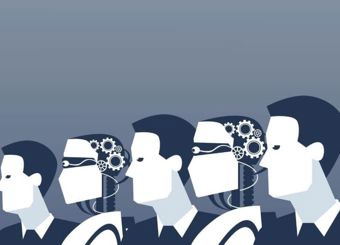What is gamification?
Gamification involves applying game-design elements and principles in non-game contexts. In particular, it is finding significant traction in the business world with major organizations such as Microsoft, Salesforce, Nike and even, the US Army, leveraging principles of game design.
In this blog post, we’ll explain what gamification is, what it does and how it can be used in an eProcurement context.
What is gamification?
Gamification involves using something that already exists, such as a website, a business tool, or some sort of online community and inserting game mechanics to increase engagement and participation.
Many people assume gamification involves making business applications or tools video game-like in their function and appearance – but this simply isn’t true. Instead, designers use lessons learned from video game developers to motivate actions that add value to your business.
This can come in the form of:
- Badges
- Levelling up
- Points
- Missions
- Leaderboards
- Unlocks
- Progress tracker
- And much more
Examples of gamification
Gamification has become widespread in its applications all over the world. We’ve compiled some of the most notable examples in this list below:
#1 – America’s Army
Perhaps one of the most controversial examples of gamification in action, America’s Army - developed by the US military - doesn’t even attempt to disguise the fact it is a recruitment tool.
People interested in enrolling in the armed forces can download the game for free and hone their skills in a multiplayer-shooter environment. Players enter their details into an initial screen in the game, where they become part of an ‘Online Army’ and are offered ‘Badges of Honor’ for exemplary play - much like the medals earned by service people in the real military.
America’s Army doesn’t reflect the real nature of armed conflict, but it allows gamers a unique insight into what life in the US Army feels like, while replicating its most rewarding elements.
#2 – Duolingo
Duolingo successfully disrupted the digital learning with its innovative way to teaching people how to learn a language. Duolingo manages to offer its language learning for free by employing a combination of ads and crowdsourcing translations for local language versions of Google pages.
But perhaps its most innovative features, centers around gamification. Each lesson you undertake is graded as you go along, showing you exactly how you’re doing, and what you need to do to improve.
In addition, the app also employs a heart system, where if you get an answer wrong, you lose a heart and if you lose all three of your hearts, you must restart the lesson – ensuring you think carefully about your answers.
Finally, Duolingo features its own in-game currency called lingots, which can be used to purchase items such as streak freezes, to further incentivize playing the educational game on consecutive days.
#3 – Fitbit
As wearable technology continues to transform our relationship with our health, Fitbit and contemporaries in the health and fitness industry innovate with their gamification-centric apps.
Fitbit, excels with its implementation of gamification. It works by constructing a series of simple challenges such as walking a set number of steps every single day. Fitbit is careful not to set the bar too high, so you don’t lose motivation - but as you hit your targets - it congratulates you and gradually raises the bar.
In addition, Fitbit encourages competition by pitting you against your peers. It features a leader board where you can see what your friends are doing and how much you must do, to beat them.
Why is gamification effective?
Gamification is effective because it taps into these fundamental principles:
Addresses basic needs – broadly speaking, people play any sort of game because they relish the challenge and want to win. According to research by Scientific American, motivation is a key factor in gamification and can be broadly split into three parts: autonomy, value and competence.
Gamified experiences offers users autonomy – no longer a passive part of the system, the user is responsible for their own performance and experience – while simultaneously achieving delivering what they need to for their day-to-day.
Receiving a reward throughout and at the end of the gamified experience creates a sense of value for the experience. Instead of working mindlessly, with intangible and difficult to achieve objectives, a gamified experienced rewards users throughout; ensuring they remain engaged throughout the process. This can be achieved with points, badges, and much more.
Social validation and competitive nature – games such as Call of Duty and Halo have maintained a presence for over a decade because of game modes encouraging players to collaborate to achieve a goal or eliminate another team.
It is the leaderboards within these games that encourage social validation and competitive nature, to ensure players are striving to do their best to usurp their rivals or to maintain a favorable position.
With gamification, leaderboards can be implemented to encourage healthy competition, with sales departments pitting salespeople against one another to determine who is the best salesperson.
Is there a future for gamification in eProcurement?
There could be a future for gamification in the procurement sector. For instance, approving requisitions or completing goods receipt notifications can be something that takes a long time, and if often a thorn in the side of procurement professionals. Having some sort of reward system in place, featuring badges and a leaderboard could combat this and incentivize staff. On the supplier management side, games can be introduced to encourage timely updates of their information or to respond to specific requests.
Do you think that gamification is a good thing? Will it infiltrate the eProcurement industry in the next few years? And will it improve procurement significantly? Do let us know on our Twitter and LinkedIn channels.






